Yangon (Rangoon): Colonial Buildings; Street Market; Strand Hotel; Scott Market; Shwedagon Paya; Mahapasana Cave and Great Sima Ordination Hall; Kaba Aye Paya; Naga Hlainggu Monastery and Nunnery; Chinatown Night Market
Yangon (better known to westerners by its British name Rangoon) is by far the largest city in Myanmar (which itself is better known to westerners by its British name, Burma). Having arrived here by air from Bangkok and refreshed ourselves a bit, we turn out to have a look around.
Colonial Buildings


The British ruled Burma (as a minor province of India) from 1885-1948, and many of its largest buildings date from the Colonial period. Above left is City Hall, while at right is the seat of the High Court. The building at below left may be the former Embassy of India (before the Myanmar capital was moved to Naypyidaw in 2005), but we are not certain; the building at below right houses the offices of the Accountant General.
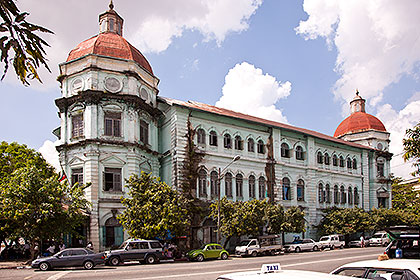
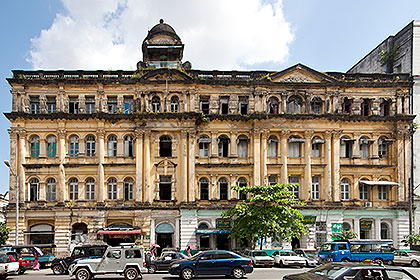
Pansodan Street
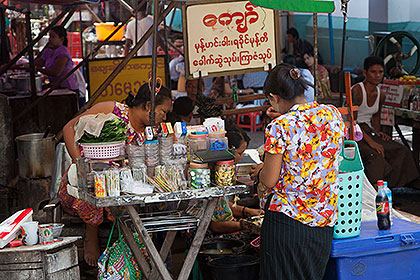
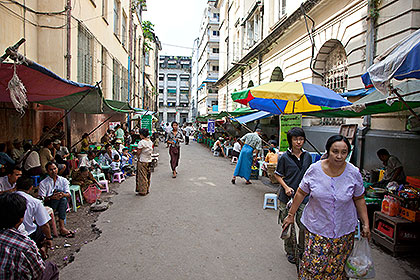
A street market stretches along Pansodan Street, and our guide May Khine Htoon shows us some local delicacies ...
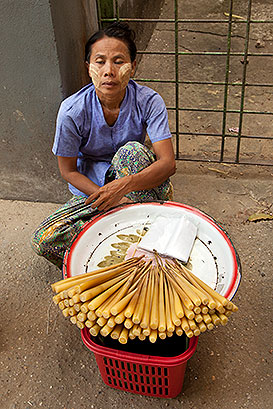
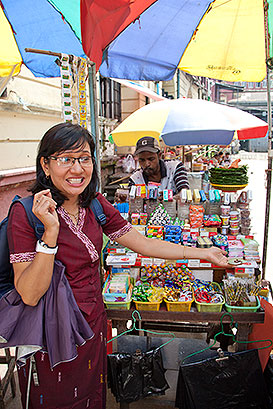
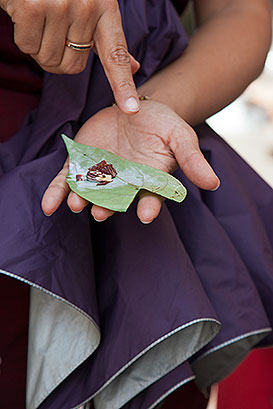
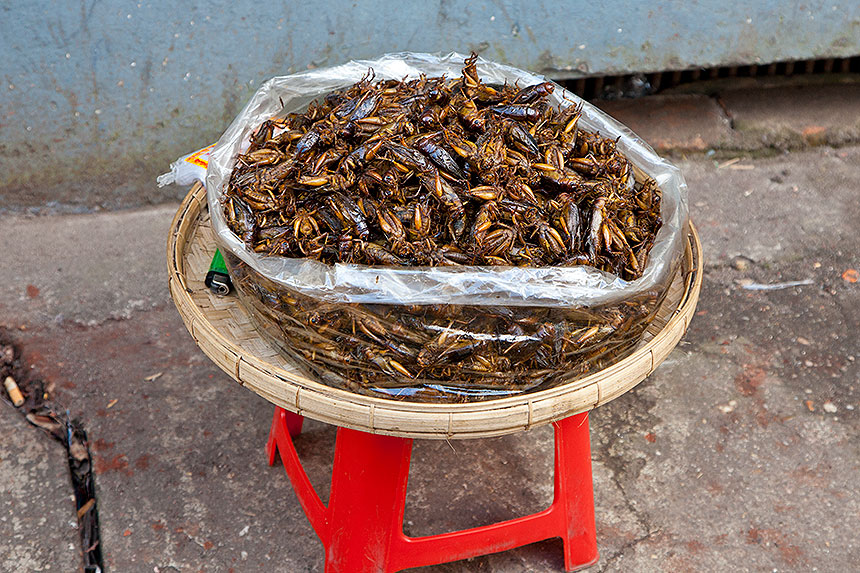
... including these yummy crickets.
Strand Hotel
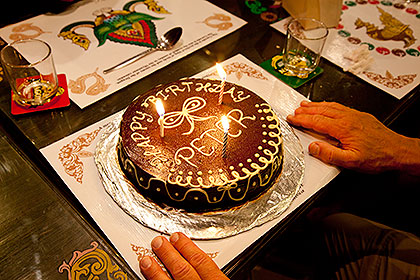
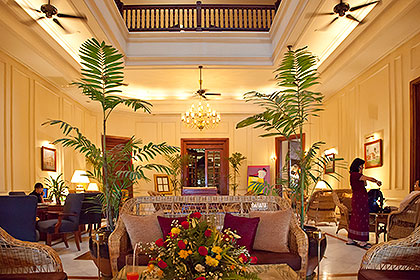
Opting for something more familiar, we have lunch at the Strand hotel, and celebrate the birthday of Chris Kogut's husband Peter.
Bogyoke Aung San Market (Scott Market)
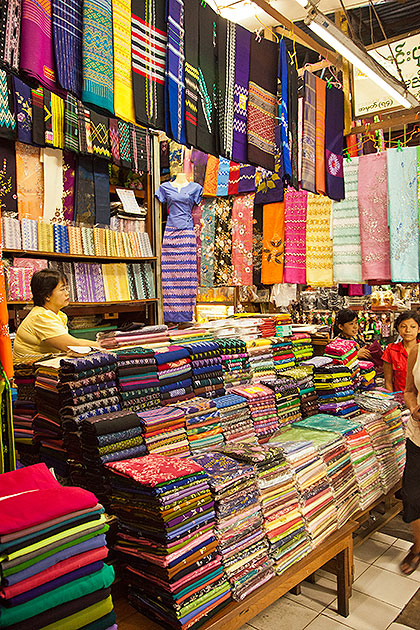

Once again the British Name (Scott Market) is more familiar than the Burmese name for this sprawling indoor market, which contains over 2000 individual shops.
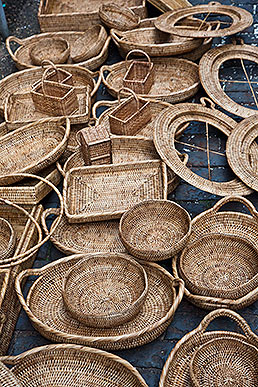

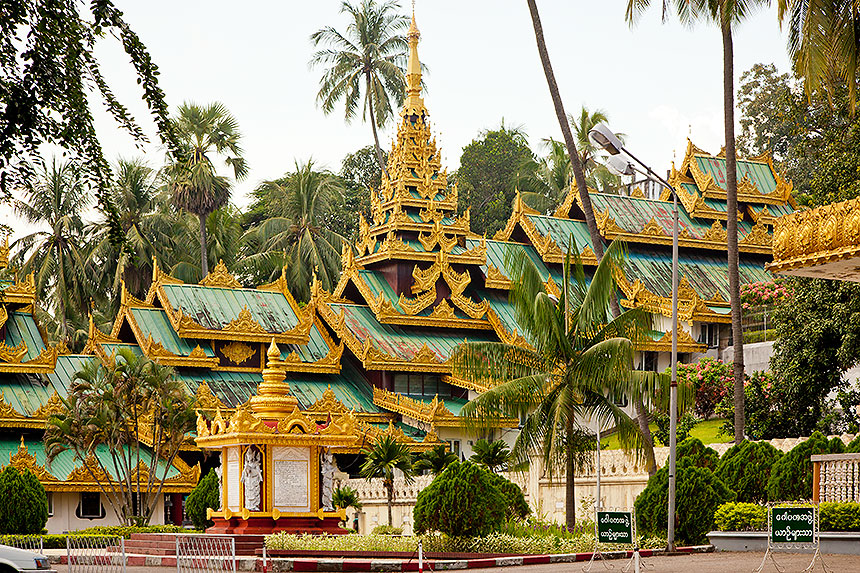
Approaching from the south, this fancy entrance hints that something extraordinary will be found beyond. And it is the ...
Shwedagon Paya (Shwedagon Pagoda)
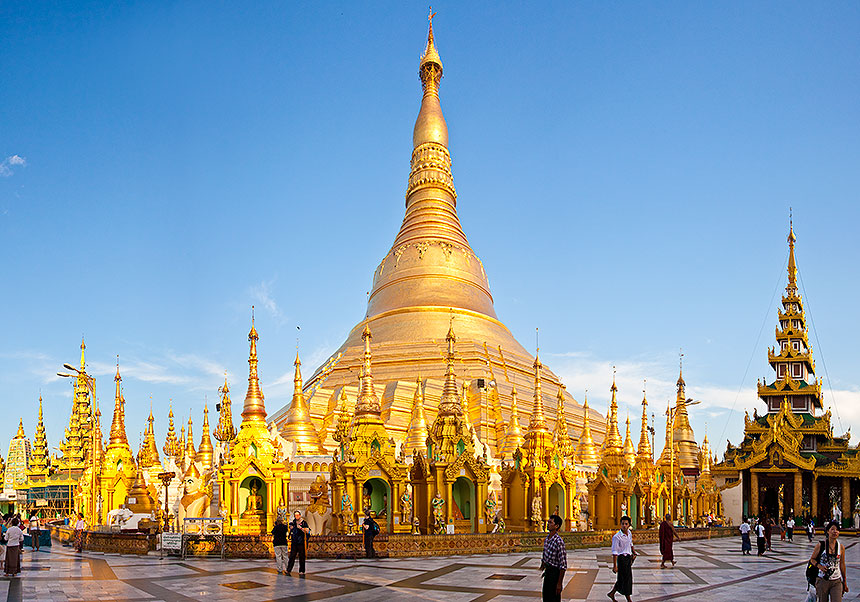
In its current configuration the Shwedagon Pagoda stands 322 feet tall, and is extensively encrusted with gold leaf, diamonds and other jewels, making it visible from all over Yangon. Legend claims the stupa is 2500 years old, though archaeologists think it was originally built between the 6th and 10th centuries. It has been rebuilt and enlarged several times after damage by earthquakes and human strife. It claims to house relics from four Buddhas, including 8 strands of hair from Gautama, the historical Buddha.
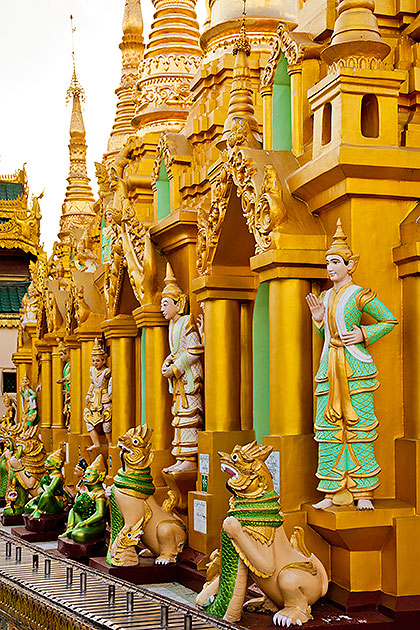

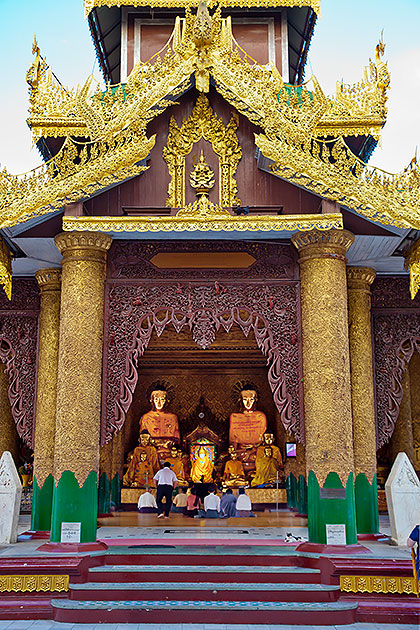


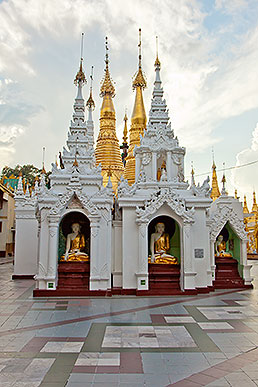
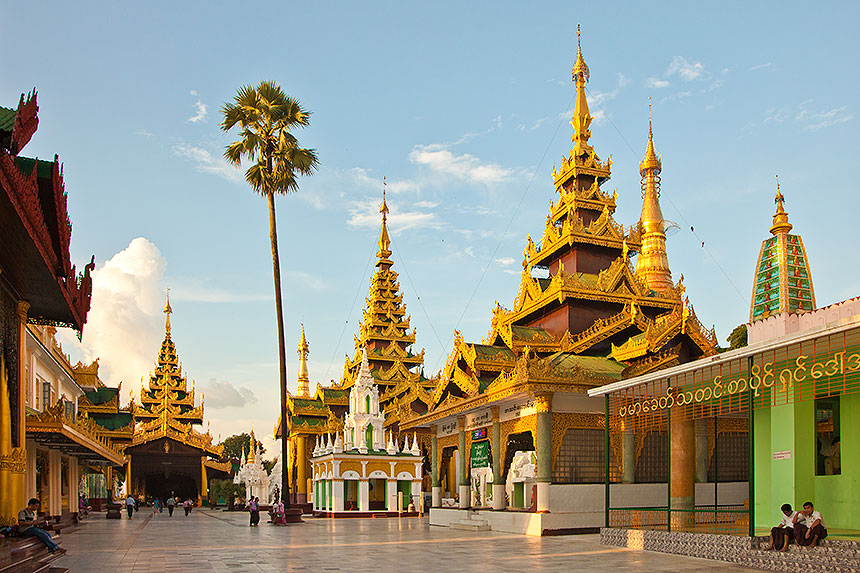
Mahapasana Cave and The Great Sima Ordination Hall
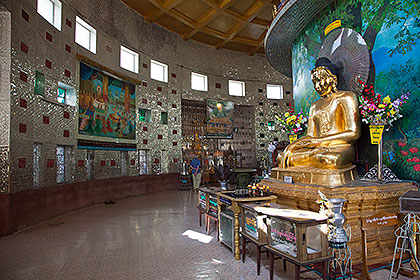
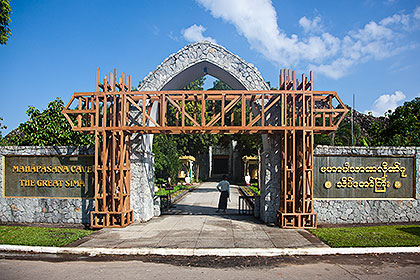
Built in the early 1950's, this huge artificial cave served as the focal point for the Sixth Buddhist Synod, held here in 1954-1956 to commemorate the 2500th anniversary of the Buddha's enlightenment. It is said that over 60,000 laborers contributed to its hasty construction. The circular hall can accommodate up to 10,000 visitors, but neither it nor its statues are much admired for grace or form.
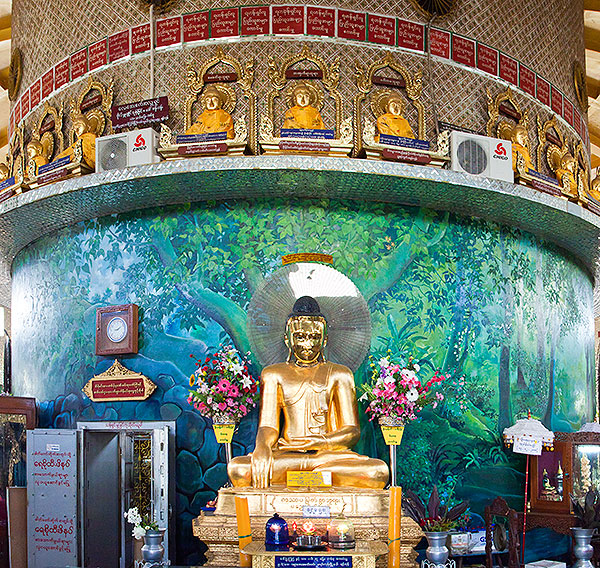
Kaba Aye Paya (Kaba Aye Pagoda)
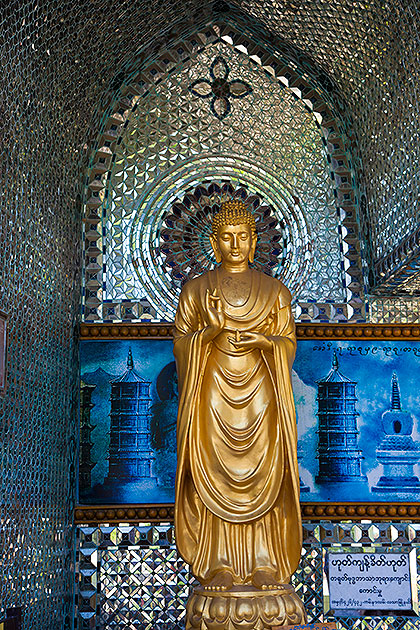

Gilt Buddha images in the nearby Kaba Aye Paya, built at the same time as the Mahapasana Cave.
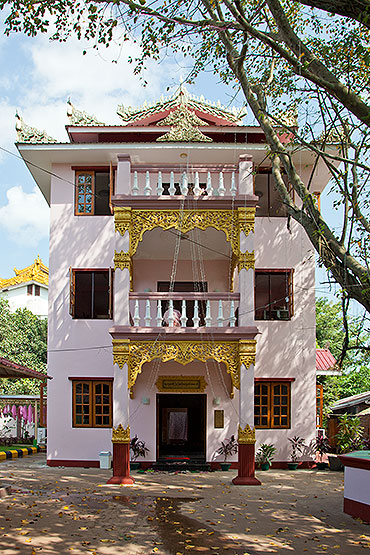
Naga Hlainggu Monastery and Nunnery (Naga Hlainggu Kalaywa Tawya Scriptural Learning Centre and Monastic School)
Occupying 17 acres on the second highest hill in Yangon, the Hlainggu Kalaywa Tawya school serves over 1300 students, including both boys and girls. The students are also said to come from a diverse set of ethnic groups throughout Myanmar. The Theravada Buddhist school states its objective as "to have the student bhikkhus here become well versed in Buddhist Scriptures as well as modern academic studies while enjoying peace of mind, and to disseminate Lord Buddha’s Teachings which are based on principles of peace."
The building shown at right is part of the nunnery, and is just one of many on the site, which also includes a pagoda.
We visit here partly to witness lunch being served to the monks and nuns. The meal is provided by a benefactor family -- a work of charity which allows the donors to earn merit.
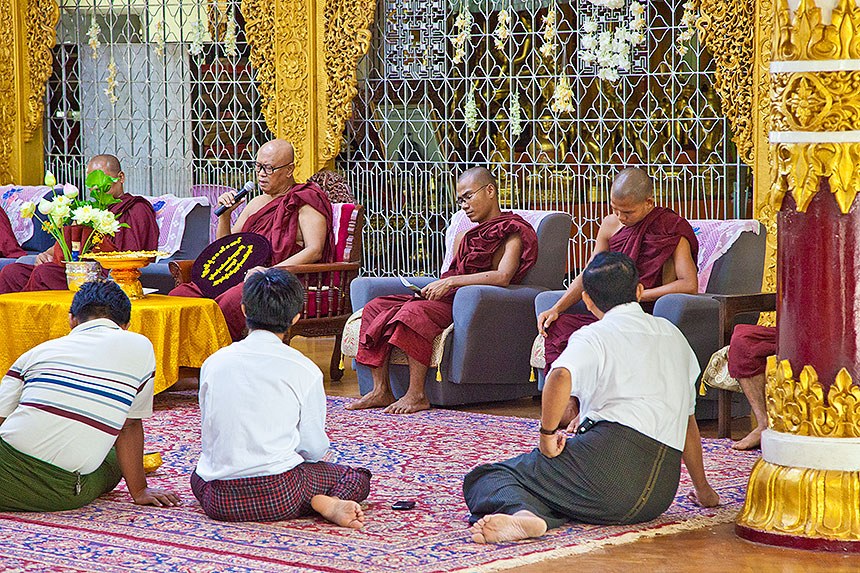
A ceremony is underway, but some monks appear to be drowsy.
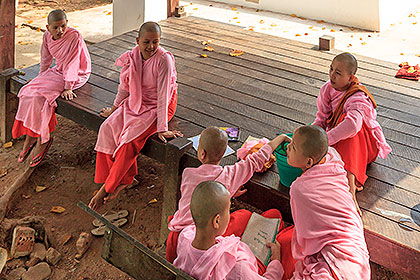
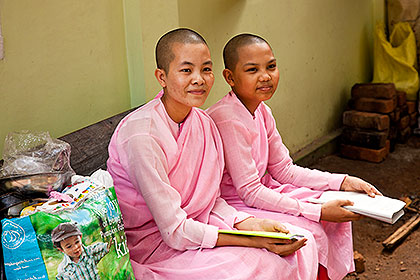
Outside, some young nuns study their lessons.

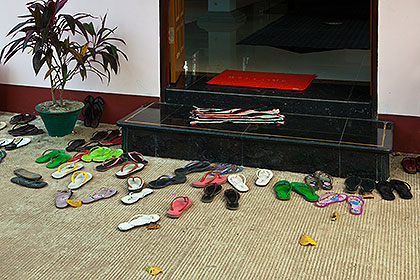
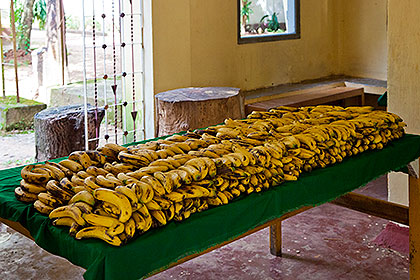
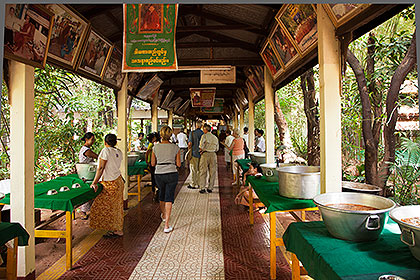
A benefactor family has provided today's food for the monks and nuns, and the serving line is almost ready.
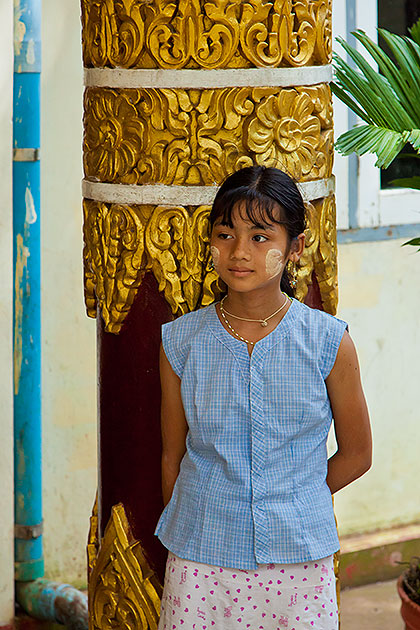
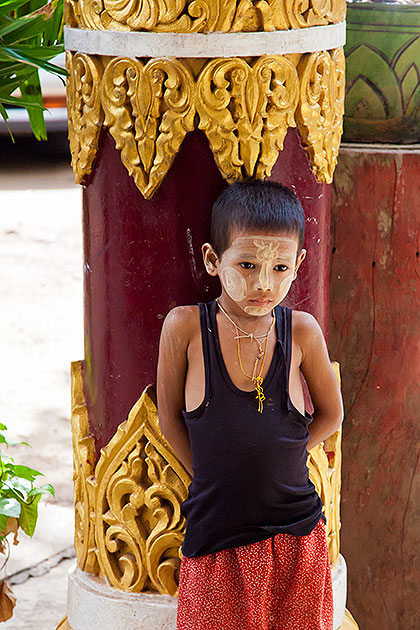
Children of the donor family wait for the serving to begin.
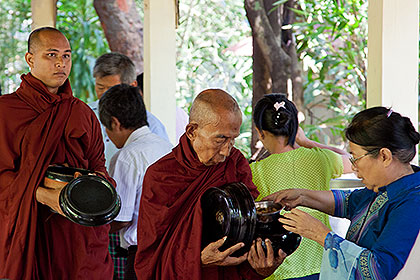
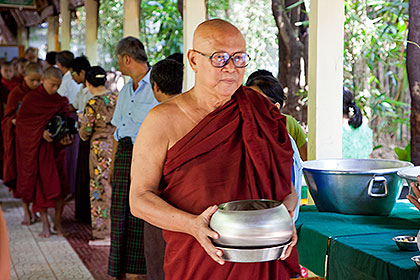
Monks pass through the serving line.
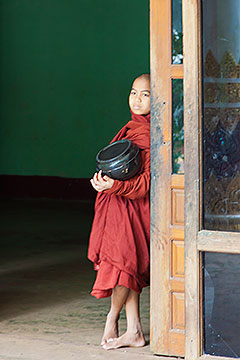
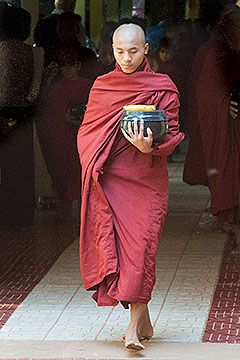
Oldest to youngest, all get served.
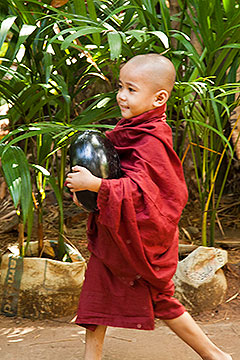

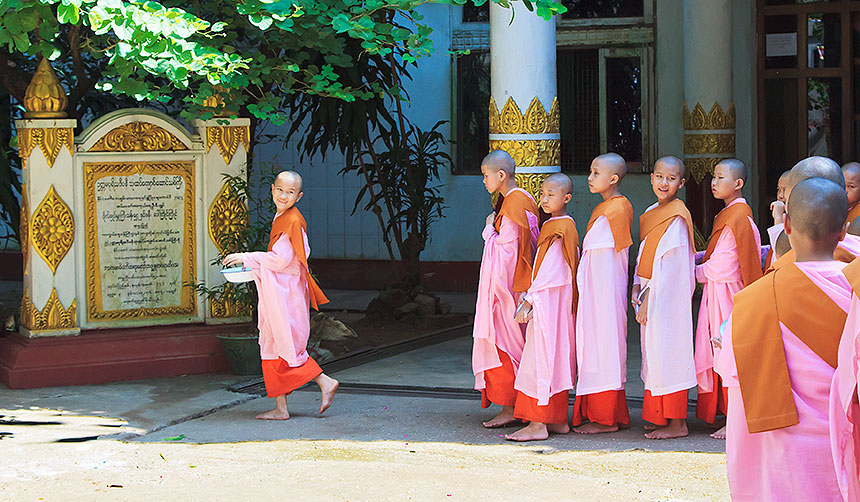
Finally the nuns get their turn.
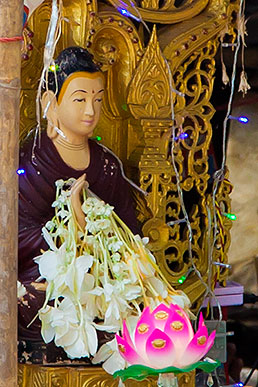
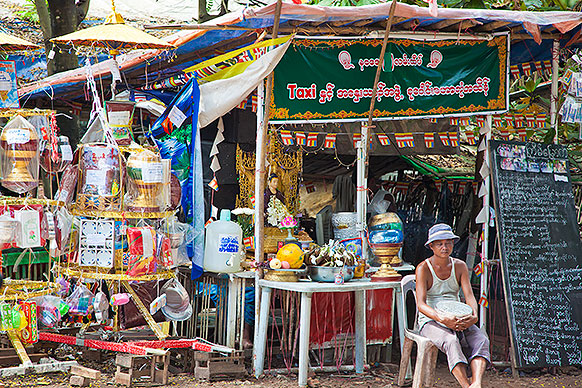
Outside the grounds on a nearby street a vendor stall seems to offer a little bit of just about anything.
Chinatown Night Market
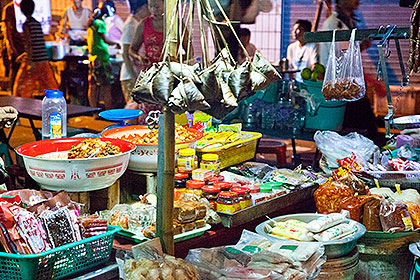
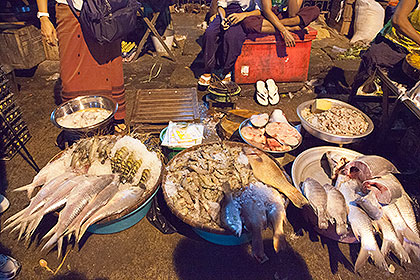
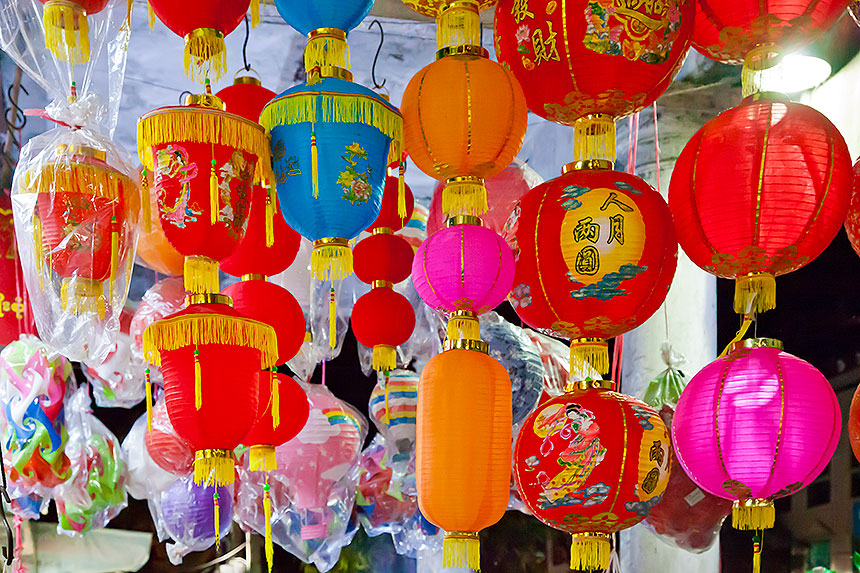
Finally, with a display of bright lanterns we conclude our time in Yangon and prepare to leave for Mandalay next morning.